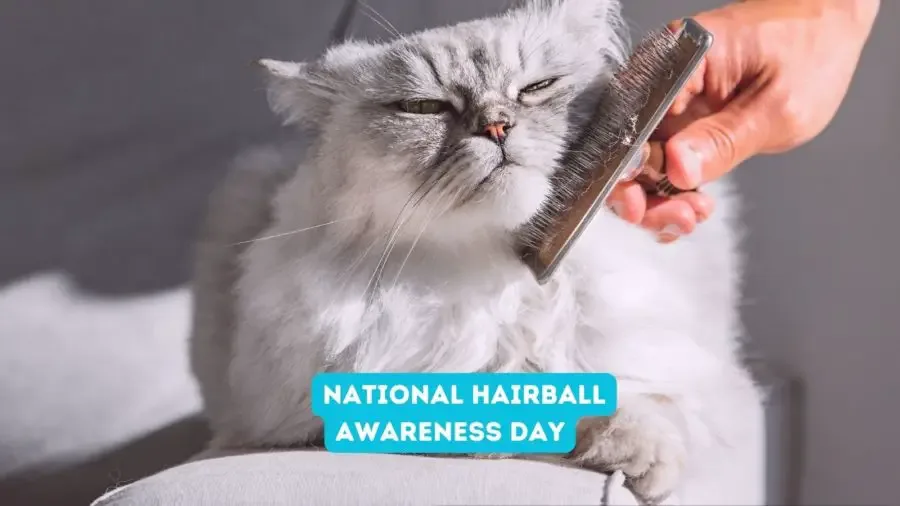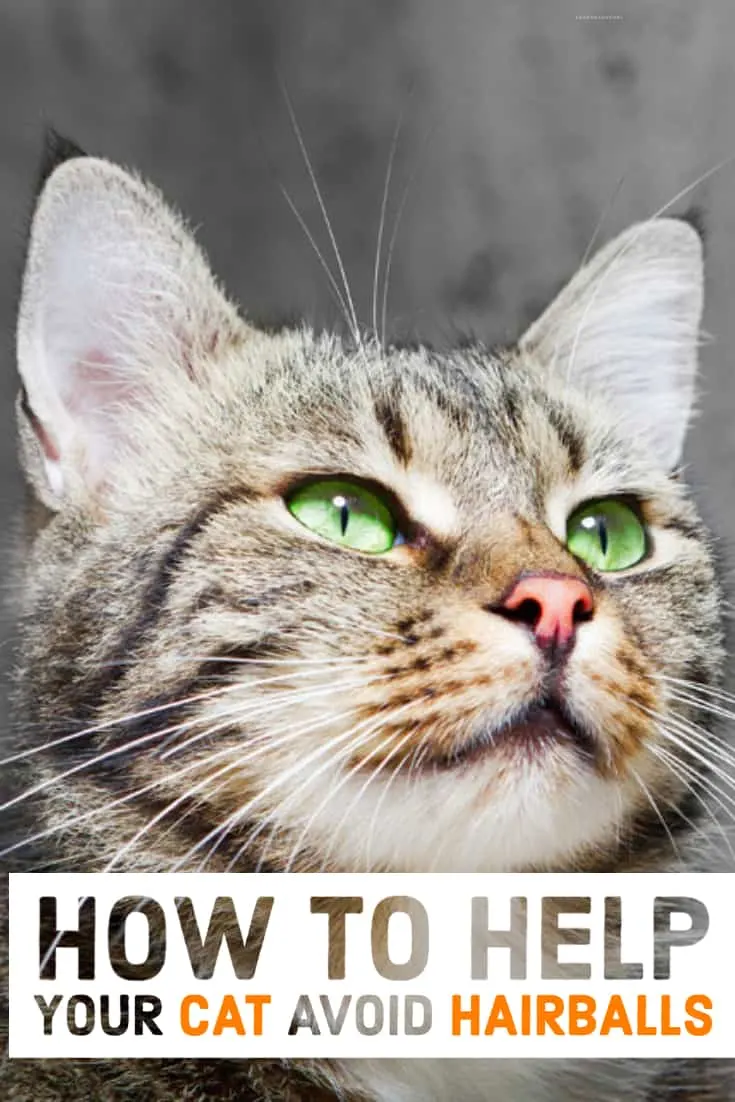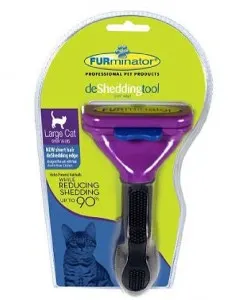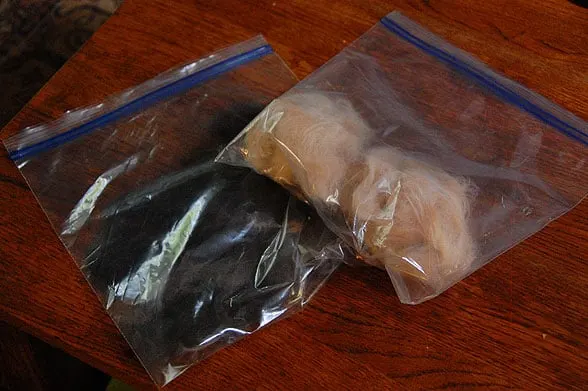Let’s face it: hairballs happen. And during the spring and fall months, they can happen a lot. Whether you call them hairballs or furballs–or their scientific name, trichobezoars–hairballs are a nuisance for both cats and cat lovers. They’re so much of a nuisance that they even have their own cat holiday: National Hairball Awareness Day!

When is National Hairball Awareness Day?
If you are struggling with hairballs, your household is not alone; with more than 90 million cats sharing their homes with their humans, hairballs are a definite concern, especially this time of the year.
National Hairball Awareness Day, the last Friday in April, is a pet holiday that draws attention to this issue and how cat lovers can help eliminate hairballs.
What is a Hairball?
You cat’s specially designed tongue gently lifts away loose fur.
That loose fur is then swallowed and may collect in the esophagus or stomach of your feline friend until it’s irritating enough for your cat to bring it back up in the form of a hairball.
Why Hairballs are a Problem
Besides the cleaning mess, hairballs can also present a health problem for your cat.
“Up to two-thirds of shed hair can be ingested as cats self-groom,” said Roger Yount, FURminator vice president of marketing. “These loose hairs can pack together in a cat’s stomach and form a hairball. In most cases, the cat will need to vomit to force out the hairball, which is not good for the cat or household.
“If hairballs are not spit out, they may block the passage of food in the stomach or become impacted, requiring surgery to remove the blockage.”
Some Interesting Facts about Hairballs
Here are some interesting facts about hairballs:
- Up to 2/3 of a cat’s shed hair can be ingested as they self-groom.
- Hairballs generally consist of compacted fur, but they often also include food and a coating of mucus.
- Hair ingestion equals roughly 0.011 ounces of hair for an outdoor adult short-haired cat weighing 6.6 pounds. This can add up to 1.24 ounces of ingested hair a year.
- The most important and most effective way to prevent hairball formation is frequent grooming to remove the dead undercoat before it is swallowed.
- Traditional hairball treatments (lubricants, diets, etc.) address the problem after the hair has already entered the cat’s body.
- Tools like the FURminator® deShedding tool prevent hairballs by preventing the hair from getting into the cat’s body in the first place.
Cat Food for Hairballs
Fatty acids, like omega 3 and 6, help promote an overall healthy coat that’s shiny and beautiful…and will shed less.
Hill’s® Science Diet® makes a special hairball control diet that’s designed to help with hairballs. The specifically designed kibble shape and unique fiber technology help cats avoid hairballs. It works by providing the right fatty acid balance; the hairball control food also contains a unique fiber technology and kibble design to help any hair that has been ingested to pass through the cat’s system.
Grooming to Prevent Cat Hairballs
Cats spend about 30% of their lives grooming–so if we can lend a helping hand, we can reduce the amount of fur they ingest.
The FURminator–available for small cats under 10 pounds and for large cats— works similar to a typical rake comb…but with a big difference.
As you comb through your cat’s hair, the deShedding Tool reaches beneath the cat’s topcoat to gently remove undercoat and loose hair. Here’s a look at the fur I collected from our cats…in just one session:
The stainless steel edge reaches beneath your cat’s fur to get to the undercoat, the hair that is so often shed during warm weather and seasonal changes. A quick release button ejects that hair to make brushing easy.
Use of the tool is easy:
Use the deShedding tool much like a brush and gently stroke across the pet’s coat in the direction of hair growth, angling the stainless steel teeth of the deShedding edge toward the coat. Start from the head and work your way back, using extra care near the pet’s stomach, legs, genitals and anus. Avoid making excessive strokes in a single area, instead using long, gentle strokes up and away from your pet’s skin. Deep or rough brushing can cause your pet’s skin to become red and irritated, so do not apply too much weight or downward pressure. If you notice any redness or irritation, discontinue use. -FURminator
The FURminator deShedding Tool for Cats gets a big paws up both from the cats and from us for helping reduce the shedding and the hairballs in our home!
More Cat Holidays
National Hairball Awareness Day is just one of many April awareness days and holidays here on CatTipper. You also might enjoy:
Pin it to remember

- 🎉 GIVEAWAY: Lord of the Pets Portrait of Your Cat! - November 26, 2024
- Review: Lord of the Pets Cat Portraits! - November 26, 2024
- Cat Adoption: FAQ You Might Have - June 28, 2024


